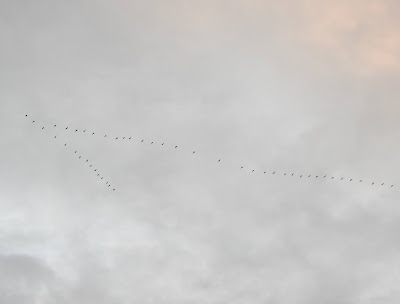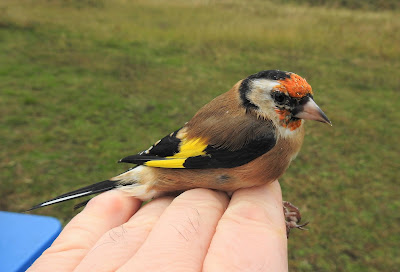It might seem odd to be posting about pollinators as we rapidly move through autumn, and even more so, in the most un-pollinator weather we have been having lately!
I've been a member of the fantastic invertebrate charity Buglife for a number of years now, and to quote from their website...
Buglife is the only organisation in Europe devoted to the conservation of all invertebrates..., and they work tirelessly to save...
Britain's rarest little animals, everything from bees to beetles, worms to woodlice and jumping spiders to jellyfish. And that's why I support them. Take a look at what they do
HERE
In their most recent newsletter, 'The Buzz', was an interesting article entitled 'Save the bees (but which ones?). The opening paragraph started the article with...contrary to a popular belief, adding more honeybees is not the answer to pollinator declines. It may do more harm than good..., and when you think about it for a moment, you can see why.
I think if you were to ask members of the public what they think of, when pollinators are mentioned, and they are thankfully mentioned a lot in the media these days, they will more than likely say it is a honeybee. It probably isn't a fly, wasp, moth, butterfly or even a wild species of bee! That is my experience, and as the article states the experience of Buglife too. In the eyes of the press and the media, pollination is all about honeybees. They write articles about pollinator declines, illustrated with pictures of honeybees and beekeepers, and well-meaning pollinator conservation projects focus on increasing the number of honeybee hives in our towns, cities and countryside. Are they the right pollinators?
The article goes on to say that there are estimated to be more than 4,000 species of insects in the UK that pollinate our crops. And there is mounting evidence that they are in serious trouble. In contrast, there is one species of domesticated honeybee that is kept by nearly all beekeepers in the UK, the Western honeybee Apis mellifera.
Honeybees do provide valued pollination services for a range of agricultural crops, especially in the absence of wild pollinators, or where large numbers of bees are required to pollinate monocultures of mass flowering crops. Honeybees also provide humans with honey, beeswax and other products, so their economic contribution to people is significant. They cope with domestication, hives can be easily moved and they can live in a range of habitats, feeding on a wide range of flowers. They are often described as a cosmopolitan super-generalist for these reasons.
However, there are hundreds of thousands of other species of insect that are also pollinators, including wild bees, such as bumblebees and solitary bees, flies, butterflies, moths, beetles and wasps; the list goes on. Buglife tells us that many of these pollinating insects are specialist species, requiring a narrow range of flower types or habitats, and many plants are only pollinated by these specialists.
I wasn't aware, for example, that Cocoa is only pollinated by midges! Think about that the next time you unwrap your favourite chocolate bar! Tomato flowers can only be pollinated by bumblebees, and I was aware of this through the Linking the Environment And Farming (LEAF) Landscape and Nature Conservation Audits I complete on behalf of some of these growers.
Surprisingly, there is very little monitoring of the health of our wild pollinators, and Buglife rely upon surveys and monitoring of species like butterflies, moths and bumblebees, and on the distribution data that is collected by specialist recording schemes. You would think that with the economic importance of wild pollinators, their health would be monitored, because without them, humanity is toast!
The results of surveying and monitoring of various species are extremely troubling. There is a reduction in both the abundance, and diversity of pollinator species. More and more, pollinator assemblages are becoming dominated by a reduced number of widespread, generalist, more mobile species. We see this in bird populations too, and it is the result of our destruction and fragmentation of habitat, and climate change is a factor too. The bottom line, is that it is negative human influence that is causing these declines. The result is that the more specialist and less mobile species are suffering the greatest declines and becoming locally extinct.
To quote directly from the article,...a small number of unfussy and pollutant-tolerant species are able to cope with the damage that humans are doing to our planet. These hardy species are replacing the rich diversity of specialist species that make up the fabric of life on Earth.
And therein lies the problem. While honeybees are affected by many of the same issues that are affecting our wild pollinators, the domesticated honeybees are not in decline, they are probably the most numerous bees on the planet, and definitely not a conservation priority!
To put this into context, in a recent study of changes in distribution of 202 bee species, 93 species of wild bees were rapidly declining, but the honeybee as the third fastest expanding species, its distribution apparently spreading by 5% a year between 1971 and 2015.
Coming back to Buglife, they state that...while honeybees are sometimes used as a proxy for pollinator populations and the health of the countryside, this is problematic. At a 'population' level the numbers of hives is directly related to the number of beekeepers and the effort they put into sustaining their hives. So, the populations of honeybees are artificially maintained at a high level. Their large colony size and honey stores also mean that domesticated bees are more robust to environmental shocks and pesticides when compared with bumblebees or solitary bees.
The problem with all of this, is that there is growing evidence that honeybees can actually pose a threat to wild pollinators. If you increase the number of honeybee hives in an area, this vastly increases the number of individual bees in that area, and a hive can support between 30 and 40 thousand honeybees during the summer! It is then obvious, that by increasing the number of bees in an area, it will also increase the competition for flower resources, and this puts pressure on wild pollinators.
There are some startling statistics in the article regarding this competition, and...these competition effects can be measured 600 - 1,100 m from the hive, and, over six months a single hive will use the resources that would otherwise have supported 2000,000 wild bees. Yes, 200,000 wild bees, and think what a disrupting effect this will have on pollination services, and the negative impacts on biodiversity.
The increase in honeybee populations has been far greater in urban areas. In London the density of honeybee colonies is more than twice the European mean of 4.2 hives/sq. km. As the greenspaces of London aren't carpeted with pollen rich plants such as lavender, it has been calculated that the area of London greenspace required to support one honeybee colony is 13.28 ha. That's 32.81 acres, or 18 football pitches!
Buglife think that too much focus on honeybees ignores the thousands of other creatures essential to a functioning ecosystem, and I totally agree. By focussing the attention on honeybees, there is a real risk that we miss the real crisis here, the decline of wild pollinators, and it is they that are in most urgent need of our help. The increasing numbers of honeybees, increases the pressures on our suffering and declining wild pollinators.
So, what can be done? Buglife state that...honeybee hives should not be introduced to an area without first assessing the current density of honeybee hives, and the carrying capacity of the local environment. Where insufficient flower resources are present, sufficient new resource should be established before more honeybees are introduced... Buglife suggests that at least an additional 2 hectares (5 acres) of wildflower-rich habitat per additional hive. The tricky bit will be estimating the carrying capacity of the local environment, but I think it is essential that this is done.
They go on to say that honeybee hives must not be established within, or adjacent to protected sites such as SSSIs, and perhaps even County Wildlife Sites. It's a similar position regarding the gamebird industry, and restrictions on releases within and close to, protected sites such as SSSIs.
I'll leave the final words to the brilliant Buglife!
To address the pollinator crisis, focus and attention must be given to resolving problems that are faced by wild pollinators, fixing these problems will also help honeybees. Actions focussed solely on keeping honeybees can at best only help one domesticated species.
Messaging about "saving bees" must highlight and focus on wild species. Our forgotten wild pollinators - flies, wasps and the rest - must be celebrated as part of the rich diversity of species that provide this essential ecosystem service. Amen to that!
Below are just a few pictures of some of my favourite pollinators.
'The Footballer' or Helophilus pendulus
As I write this, it is blowing a hooley outside, with heavy, squally showers auditioning at my window (a little Marillion reference there). And as I said at the start, not very pollinator friendly weather! In fact, it wasn't very 'birder' friendly weather this morning either, and my planned seawatching had to be abandoned because of the rain, and more to the point, a lack of shelter. I don't want to say too much, in case I get my hopes up, but there could be an improvement in the weather towards the middle of the week. Yippee!





























